Seven Natural Home Remedies to Treat Athlete's Foot
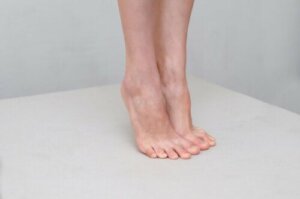

Reviewed and approved by Doctor Carlos Fabián Avila
Athlete’s foot is a fungal infection that thrives in somewhat opposing environments: either in hot or very humid places.
Do you know how to recognize it? Do you know how to treat it? In this article, we talk about its main symptoms and causes. In addition, we reveal some natural treatments to help you fight it.
What are the causes of athlete’s foot?
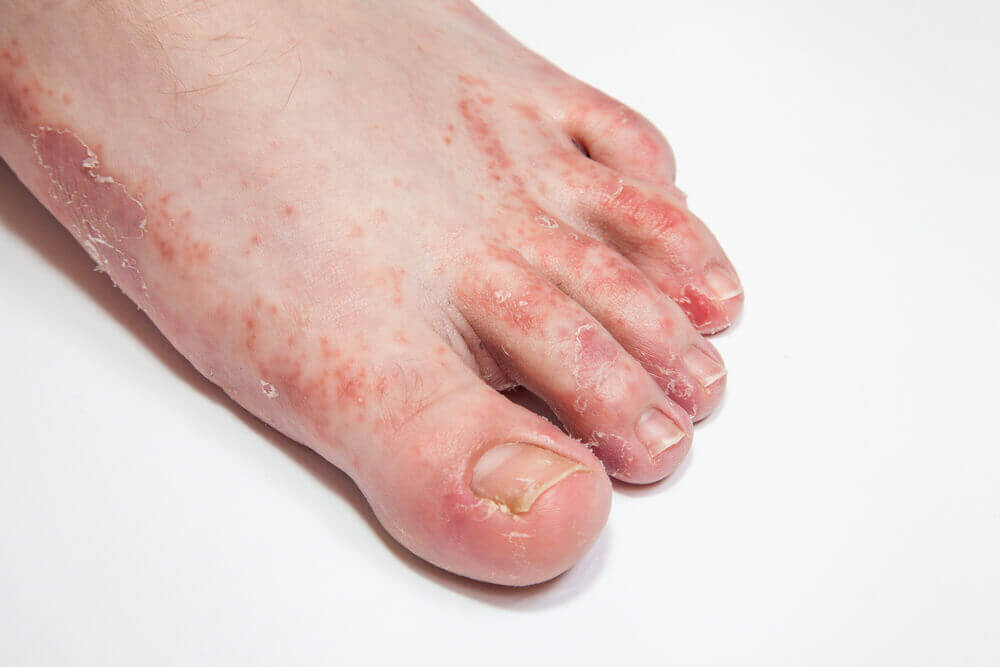
According to information collected in the National Center for Biotechnology Information, athlete’s foot is caused by dermatophyte fungal infection. These can reach the skin through small cracks or wounds in its upper layer.
Due to the fact that the feet usually have a humid and warm environment, these fungi get proliferated. In turn, you’re more likely to get an infection due to the following factors:
- Having moist feet for long periods of time.
- Excessive sweating.
- Not drying your feet well.
- Minor skin lesions.
- Immune deficiencies.
- Wearing socks or tights that aren’t made of cotton or wearing closed plastic shoes that don’t allow the feet to ventilate properly.
To make matters worse, athlete’s foot can be extremely contagious. It can spread from finger to finger, foot to foot, on the floors of showers, and sharing shoes. Once it’s been identified, you need to effectively treat it and stop it from spreading.
Read this article too: Six Natural Remedies for Athlete’s Foot Relief
What are the symptoms of athlete’s foot?
The symptoms of this condition can manifest in one way or another, according to the severity of the infection. It can frequently cause:
- Bad odor.
- Red rash.
- Pain when extending the toes.
- Blisters filled with fluid or pus.
- Dry skin.
- Burning or itching.
Natural remedies to fight athlete’s foot
Athlete’s foot is a fungal infection. Therefore, its first-line treatment is usually prescription or over-the-counter antifungal products. Information disclosed in the Cochrane Library states that antifungals should be used two times a day, for about four weeks, to fight this infection.
However, in some people, the treatment must be extended or repeated, as there’s a risk of reinfection. On the other hand, it’s convenient to keep your feet dry, wear ventilated shoes, and avoid walking barefoot in swimming pools and public places.
However, a series of home remedies are also available that can help in this regard. Although there’s limited evidence on its effectiveness, they’re usually safe to use and, according to popular culture, yield good results.
1. Vinegar
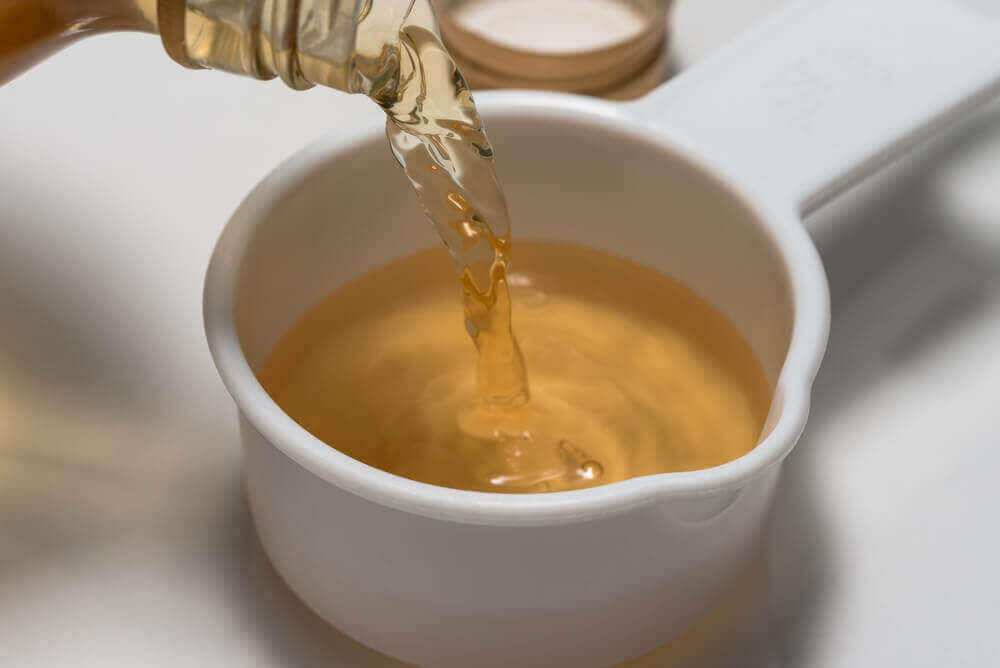
Apple cider vinegar baths are one of the popular remedies against athlete’s foot. According to a study published in Medscape General Medicine, it has anti-infective properties. However, there’s no evidence on its effectiveness against athlete’s foot.
In any case, it’s a safe and inexpensive remedy that seems to relieve symptoms such as itching. If you want to try it at home, take note of the following instructions.
Ingredients
- 2 tablespoons of vinegar (30 ml)
- 3 cups of water (750 ml)
Instructions
- Add the vinegar and warm water to a large bowl or bucket.
- Soak your feet in it for 15 minutes.
- Afterward, dry them well. Repeat this process twice a day.
2. Salt
This is another remedy that may help relieve athlete’s foot. As in the previous case, you can use it in a foot bath.
Ingredients
- 6 tablespoons of salt (60 g)
- 4 cups of water (1 liter)
Instructions
- First of all, add the salt to a bucket with water. Then, soak your feet.
- After 15 or 20 minutes, dry them well.
- Do this for at least 15 days.
3. Baking soda
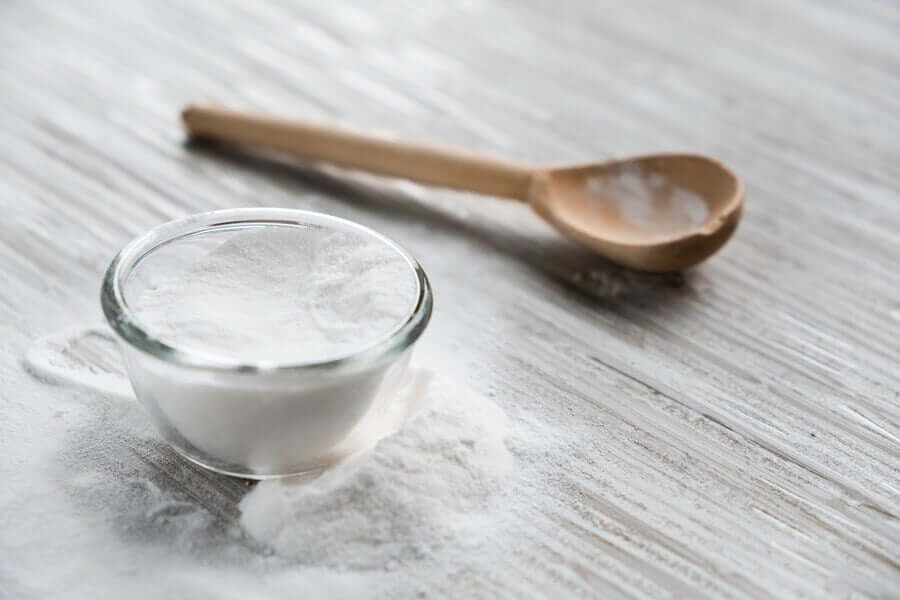
In the popular sphere, ingredients such as baking soda have been used to help treat problems such as foot fungi. Although more research is needed to corroborate this effect, a study published in the journal Mycopathologia discovered that this ingredient has antifungal effects when used on the skin.
In any case, as more research is needed, you should use it with caution. If you notice an unfavorable reaction, you need to suspend its use and rinse with plenty of water.
Ingredients
- 2 tablespoons of baking soda (30 g)
- Water (as needed)
Instructions
- First of all, mix the baking soda with a little water. The idea is to make a thick paste. Depending on how much you need, you can add more water or more baking soda.
- Rub the paste around the affected areas and let it act. After 20 minutes, rinse.
4. Onion juice
Onion has antifungal properties that apparently work in the treatment of athlete’s foot. In a study published in the journal Fitoterapia, it was determined that this ingredient, similar to garlic, has promising effects in the treatment of fungal diseases such as those caused by dermatophytes.
As in the previous case, more evidence is needed to confirm their safety and efficacy. Therefore, if you notice any unwanted effect, it’s better to suspend its use.
Ingredients
- 1 or 2 onions
Instructions
- First of all, blend the onions until you get the juice.
- Then, using a cotton ball, apply the onion juice to the infected area (after first cleaning it using an antifungal product).
- Finally, clean and protect the area with talcum powder to prevent any residual moisture.
5. Tea
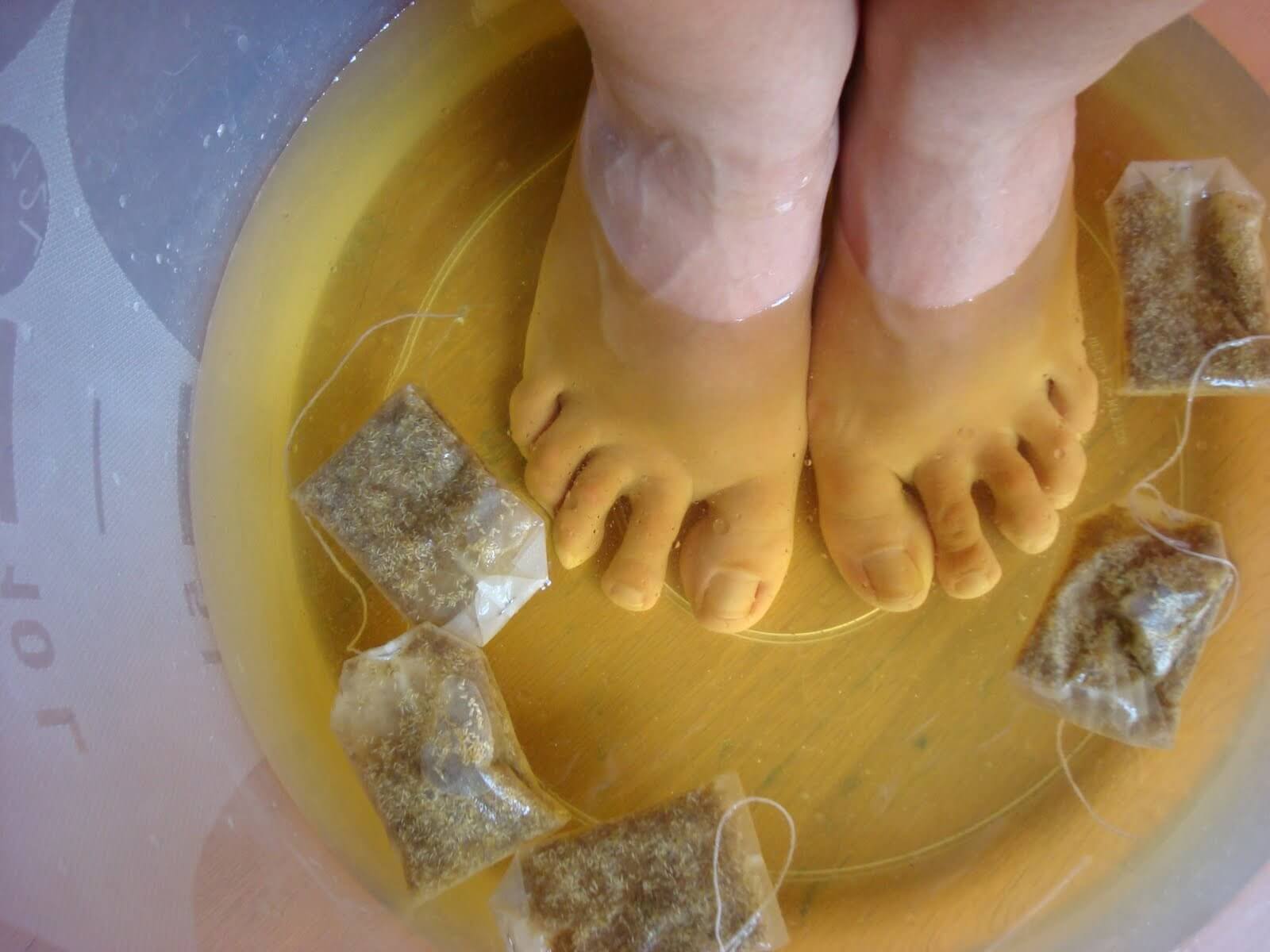
Baths with tea bags have a calming effect against symptoms such as itching and irritation caused by athlete’s foot. It’s said that they also may help against fungi, but there’s no scientific evidence for this.
Ingredients
- 2 cups of water (500 ml)
- 6 teaspoons of tea (60 g) or 6 tea bags
Instructions
- First of all, heat the water to a boil. Then, add the tea and allow it to steep for 15 minutes.
- Afterward, remove from heat and wait for the liquid to cool.
- Finally, once cooled, strain the liquid and soak your feet in it.
- It’s convenient to repeat this procedure for a month.
6. Plain yogurt
Yogurt has many benefits. In this case, the bacteria found in yogurt, also known as probiotics, can seemingly prevent athlete’s foot fungus from spreading, according to research shared in the journal Frontiers in Microbiology.
Instructions
- First of all, apply some plain yogurt to the affected areas and let it dry.
- Afterward, carefully remove it using a clean cloth and completely dry your feet.
Visit: Learn How To Treat Foot Fungus With These Home Remedies
7. Hygiene
Last but not least, having good hygiene habits can be one of the best ways to control the infection.
- First of all, always wear clean and dry socks.
- When you shower, wash your feet with soap and water and dry them thoroughly.
- Wear sandals when using public showers or pools.
- Apply antifungal powder (such as talcum powder) to your feet to prevent moisture build-up.
- Finally, wear shoes that are made of natural materials, such as leather, and don’t always wear the same pair of shoes.
Medical treatment is important
The remedies we discussed here aren¿t miraculous and can be ineffective in many cases. Often, they yield effects in several applications in the long term. On the other hand, they aren’t a substitute for medical treatment. If a medical professional says it’s okay, they can be used as a complement.
All cited sources were thoroughly reviewed by our team to ensure their quality, reliability, currency, and validity. The bibliography of this article was considered reliable and of academic or scientific accuracy.
- Budak, N. H., Aykin, E., Seydim, A. C., Greene, A. K., & Guzel-Seydim, Z. B. (2014). Functional Properties of Vinegar. Journal of Food Science.
- Crawford F. (2009) Athlete’s foot. BMJ Clin Evid. 2009:1712. https://doi.org/10.1111/1750-3841.12434
- Elhage, K. G., St Claire, K., & Daveluy, S. (2022). Acetic acid and the skin: a review of vinegar in dermatology. International journal of dermatology, 61(7), 804–811. https://doi.org/10.1111/ijd.15804
- Gupta, A. K., Daigle, D., Paquet, M., Gandhi, B., Simpson, F., Villanueva, E., Verreault, M., & Lyons, D. (2018). Topical treatments for athlete’s foot. The Cochrane Database of Systematic Reviews, 2018(1), CD010863. https://doi.org/10.1002/14651858.CD010863.pub2
- InformedHealth.org. (2015, Ene 14). Athlete’s foot: Overview. Institute for Quality and Efficiency in Health Care (IQWiG). [Actualizado 2018 Jun 14]. Disponible en: https://www.ncbi.nlm.nih.gov/books/NBK279549/
- Ikeda, S., Kanoya, Y., & Nagata, S. (2013). Effects of a foot bath containing green tea polyphenols on interdigital tinea pedis. The Foot, 23(2-3). https://doi.org/10.1016/j.foot.2013.01.001
- Johnston, C. S., & Gaas, C. A. (2006). Vinegar: medicinal uses and antiglycemic effect. MedGenMed : Medscape general medicine, 8(2), 61.
- Letscher-Bru, V., Obszynski, C. M., Samsoen, M., Sabou, M., Waller, J., & Candolfi, E. (2013). Antifungal Activity of Sodium Bicarbonate Against Fungal Agents Causing Superficial Infections. Mycopathologia, 175(1–2), 153–158. https://doi.org/10.1007/s11046-012-9583-2
- Leyva Salas M, Thierry A, Lemaître M, et al. Antifungal Activity of Lactic Acid Bacteria Combinations in Dairy Mimicking Models and Their Potential as Bioprotective Cultures in Pilot Scale Applications. Front Microbiol. 2018;9:1787. Published 2018 Aug 7. doi:10.3389/fmicb.2018.01787
- Sroka, C. B. (1956). Athlete’s Foot. British Medical Journal. https://doi.org/10.1136/bmj.2.4989.420-b
- Shah, R., & Vakhariya, R., (2020). Formulation and Evaluation of Antifungal Soap of Garlic Oil. Asian Journal of Pharmaceutical Research. 10(1). DOI: 10.5958/2231-5691.2020.00003.9
- Shams-Ghahfarokhi, M., Shokoohamiri, M. R., Amirrajab, N., Moghadasi, B., Ghajari, A., Zeini, F., … Razzaghi-Abyaneh, M. (2006). In vitro antifungal activities of Allium cepa, Allium sativum and ketoconazole against some pathogenic yeasts and dermatophytes. Fitoterapia, 77(4), 321–323. https://doi.org/10.1016/j.fitote.2006.03.014
- Toukabri, N., Dhieb, C., El-Euch, D., Rouissi, M., Mokni, M., Sadfi-Zouaoui, N. (2017). Prevalence, Etiology, and Risk Factors of Tinea Pedis and Tinea Unguium in Tunisia. Can J Infect Dis Med Microbiol. 2017:6835725. doi: 10.1155/2017/6835725.
This text is provided for informational purposes only and does not replace consultation with a professional. If in doubt, consult your specialist.








